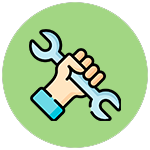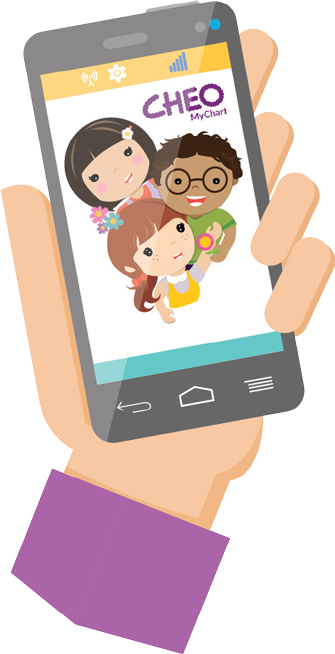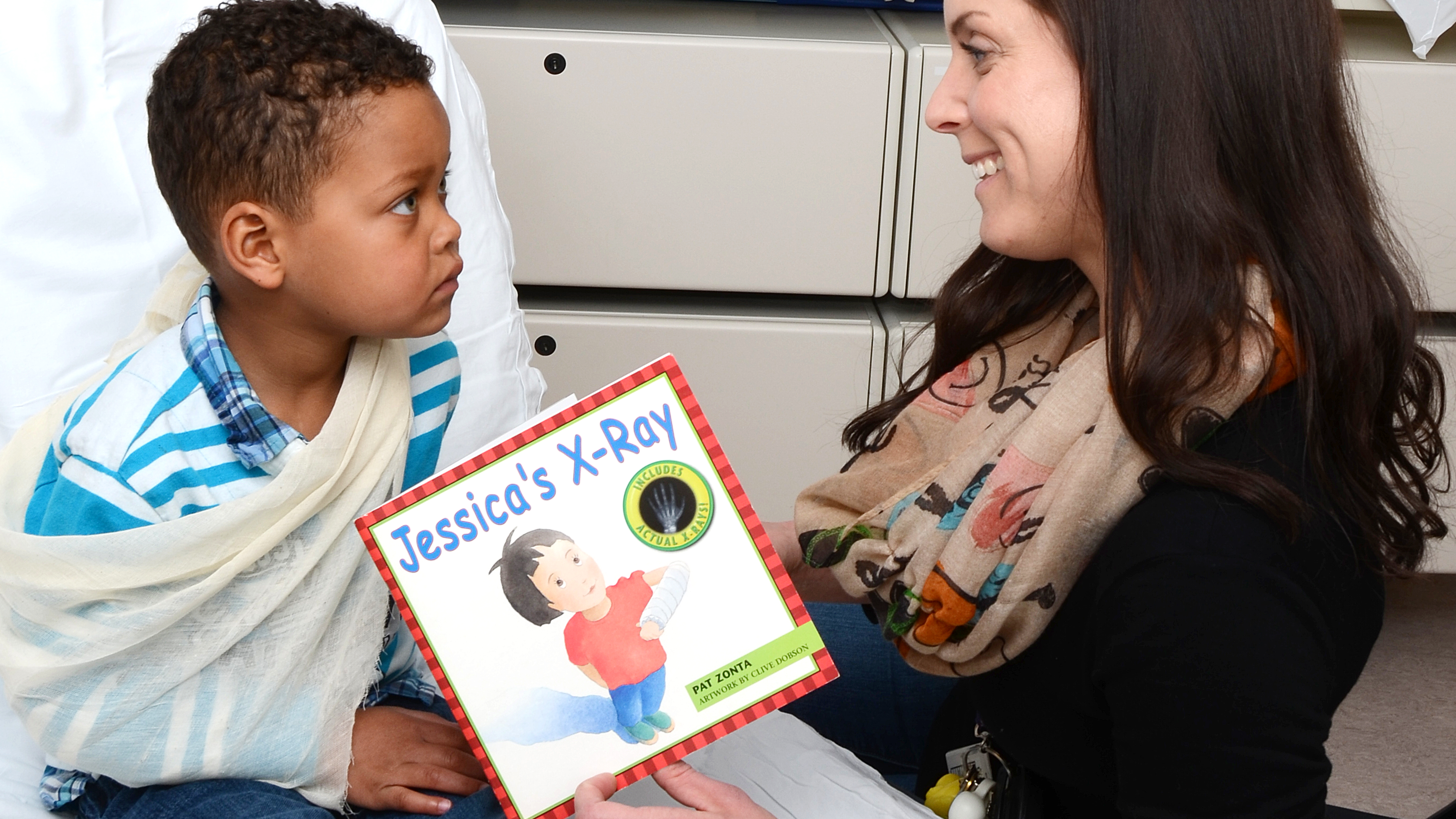
For best results make sure background graphics are enabled.
| Table of contents |
What is a halo vest?
A halo vest is made up of a ring that fits around the head. It’s fastened to a plastic vest with metal bars, which hold everything together and keep it stable. The ring is attached to the head with pins that are surgically fixed to the skull. Halo vests are used to keep the neck (the cervical spine) from moving. They are usually needed when bones in the neck are broken or separated. They may also be needed after surgery or to correct problems caused by deformed bones in the neck.
How will my child or youth be able to move with the halo vest?
It usually takes a few days to get used to the frame and vest. Because the frame is bulky, children and youth will need to move around slowly to stay balanced. Your child won’t be able to turn their head or see their feet without bending at the waist. Once they are feeling comfortable, they can begin sitting, standing, and walking again. A fall could hurt your child or cause parts of the halo vest to come loose. At home, identify and remove anything that your child or youth might trip over or bump into.
Do not pull or lift the bars to help your child or teen move. This may make some parts of the halo vest come loose.
What if my child is in pain?
You may give the medications prescribed to your child if he/she is experiencing pain. Your child may need acetaminophen or ibuprofen in the first few weeks after the halo has been put on. If your doctor has prescribed antibiotics, please take them as directed.
What about sports or other activities?
Sports will have to be put on hold for a while. Your child should not run either, as running increases the chance of a fall. Do not let your child play in sandboxes. If sand gets under the vest, it can really irritate the skin.
What can my child eat?
Your child or teen can eat a regular diet. Children and youth who are adjusting to a halo vest may burn up more calories, so they may be hungrier than usual at first. To make eating easier:
- Cut food into small pieces. Swallowing may feel different at first, so eating food cut into small pieces will help prevent choking.
- Give all liquids with a straw.
Try to avoid dropping crumbs or spilling liquids on the vest. If this happens, clean the vest right away. Bits of food or liquid under the vest can cause skin irritation.
How will my child have a bath?
During treatment with a halo vest, your child or youth will have to take sponge baths. Tub baths or showers are not allowed. Take care to keep soap and water out of the vest. Do not use lotions, soap or powder under the vest, as they can cause skin irritation. To wash skin under the vest; pass a damp washcloth under the vest and follow with a clean, dry towel.
How should I wash my child’s hair?
You can wash your child’s hair, but you must be careful not to bump the pins. To wash your child or youth’s hair:
- Use mild shampoo like a baby shampoo.
- Have your child or teen bend over the sink or lean over the bath tub. Smaller children may need to use a chair to do this. If you have the space, your child could lie flat on the kitchen counter, with their head extended over the sink. Or they could lie on a bed, with their head extended over a bucket.
- Use the cooler settings on a blow dryer to dry your child’s hair if needed.
How can I make my child more comfortable at night?
Your child will not be able to sleep with a normal pillow so it might take them some time to get used to sleeping. You can help by:
- Placing a small, rolled towel under their neck while they lie flat on their back.
- Placing a small, rolled towel under the cheek if they are lying on their side.
- Raising the head of the bed or mattress. You may place blocks under the feet of the bed, or place pillows under the mattress. Remember not to place a pillow under your child’s head.
- Keeping a baby monitor in their room so you will know if they are having difficulty during the night.
What clothing kind of clothing should my child or youth wear?
- Undershirts and T-shirts: cut the shoulder seams and pull them up under the vest. Fasten them with Velcro® at the top.
- Shirts or sweatshirts that have been adjusted to fit around the halo and vest.
- Sturdy shoes with good traction.
Are there any restrictions to travel?
The metal frame can become very hot or very cold, depending on the outside temperature. Your child or teen should not be out in very hot or cold weather, unless the metal frame is well protected (staying in the shade in summer or wrapping the frame with a scarf in the winter). Your child or teen should not stay outdoors for long periods in extreme temperatures. Children and youth with a halo vest can use the car seat, booster seat or seat belt they were using before the vest.
How do I care for the pin sites?
The pin sites should be cleaned at least once a day using sterile water or warm soapy water to prevent infections. Your nurse will show you how to do this. You should also check the pin sites every day, and call your doctor right away if you notice redness, tenderness, swelling or discharge.

What is the wrench provided with the vest used for?
The metal wrench is used to remove the vest in emergencies. Keep it attached to the front of the vest at all times. Call your surgeon right away if:
- your child hears knocking, grating or clicking noises
- your child has neck pain
- the feeling in your child’s arms or legs changes
- the pins become loose or begin to move.
- you see any signs of infection at the pin site; redness, drainage that is yellow or green, swelling
Have you registered for MyChart?
MyChart is a FREE secure, online patient portal that connects patients to parts of their CHEO electronic health record, anywhere, at any time.
To apply for MyChart access, visit cheo.on.ca/mychart and fill out the MyChart access request form. Once your application has been approved, we'll send you an email with an activation code and instructions on how to log in and get started.





